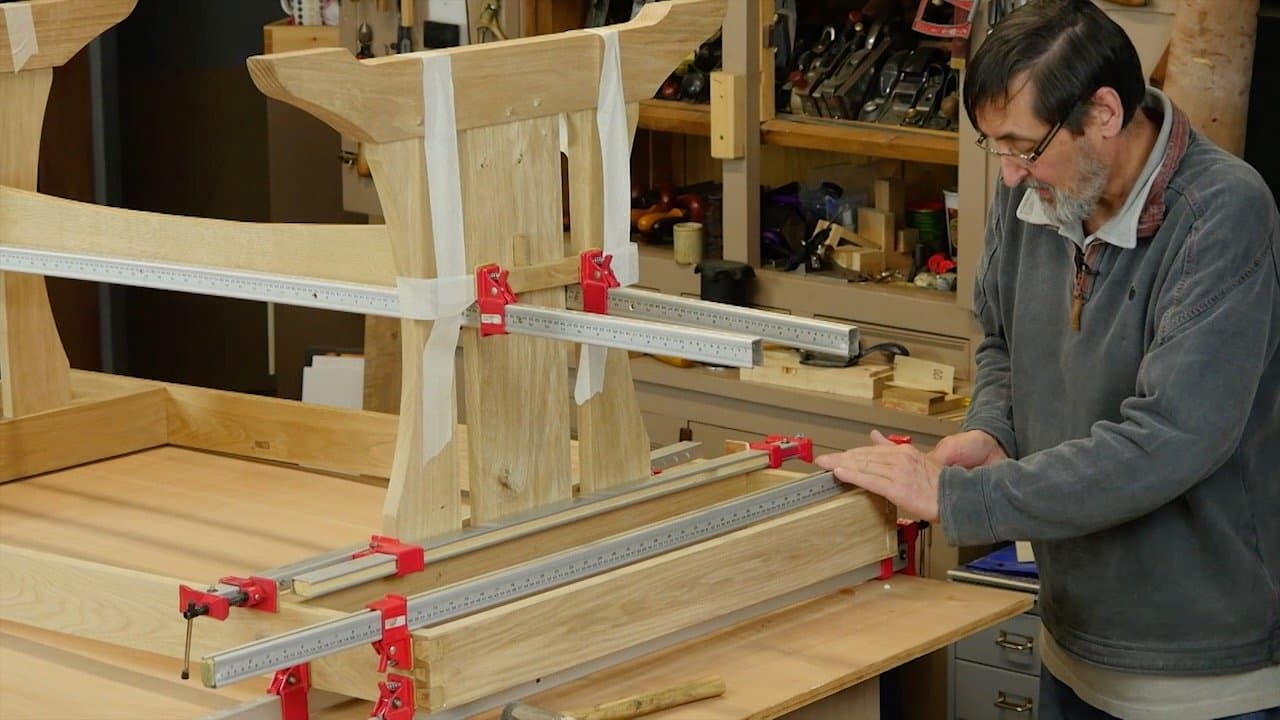Trestle Table – Episode 9
Posted 24 June 2015
This is an episode in a paid series. Want to watch it? You just need to sign up as a paid member, and you can enjoy this video and many other videos we think you will love.
We are ready to glue up the base-frame assembly, which is made easier by having already glued up the end frame sub-assemblies. With that done, Paul glues on the infills and cuts the turnbuttons before edge jointing and gluing up the table top.


Thank you for the lesson.
Nice demonstrations of some of the more involved glue ups I’ve seen on WWMC. I really appreciated your honest portrayal of the slight elevation in stress you still experience after 50+ years of glue-ups. I definitely have to take a deep breath and calm myself in most of my glue-ups. It’s nice to know it’s a natural feeling among woodworkers of all experience levels.
Why use such a fast setting glue? There are slower setting glues that I’m sure would do the job.
I used liquid hide glue once to glue a handle on a drawer front and decided I’d made a mistake
and in less than 1/2 hour it tore the wood away from the drawer front in getting it off.
Coming together quite nicely, when you have finished the table Paul, can you make a carver chair to go with it.
i believe a dining chair is the next but one project
I hope so, can’t have a table of this quality without any chairs
i love you Paul and would be more than happy to help with any future glue ups .this is a beautiful table especially the design element
Bromance
Fun watching a project come together.
Paul,
I have really enjoyed watching this trestle table come together. I am wanting to make a coffee table sized version out of walnut. (I have noticed a version of this on your website here.)
Would it be possible to share the materials and cut list, as well the adaptations necessary?
Thanks,
Joshua
I can’t wait to get a chance to build this one. My wife has been informed that there will be a new dinning table in the near future.
You always manage to make me laugh Mr. Sellers. ‘You probably have people that love you and care for you.’ Classic.
I was just wondering how you determine if breadboard ends are necessary or not? Is it purely application? For example, you expect a dining table to remain in a climate controlled room of the house with a consistent humidity level? There is a project for a breadboard end cutting board. Again in this instance, breadboard ends were a feature due to application?
https://woodworkingmasterclasses.com/videos/breadboard-end-cutting-board/
I intended to build this trestle table. A very elegant design. The problem I would have is moving it through doorways after construction. The apron being glued to the undercarriage which is glued to the columns and feet make it impossible to get through doorways in the average sized home and even out of my small shop after a glue-up.
I’m considering making a two part undercarriage allowing the apron and undercarriage to be detached from the column/foot assembly.
Has anyone considered or done this?
Thanks